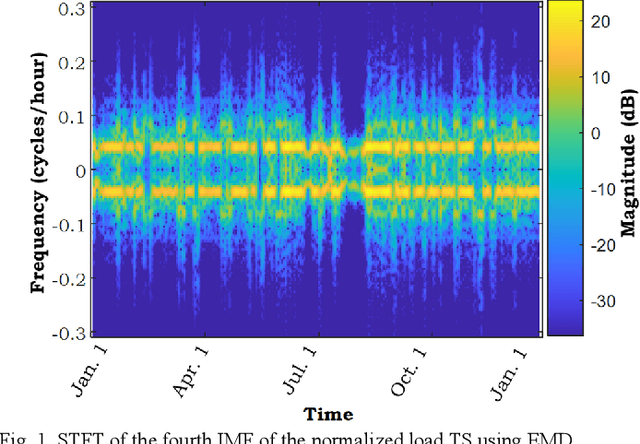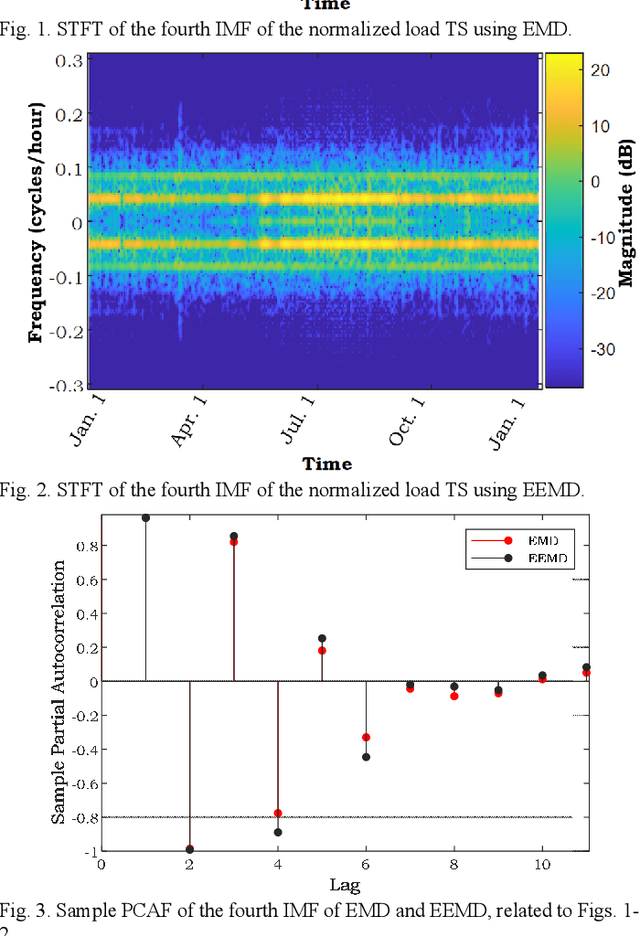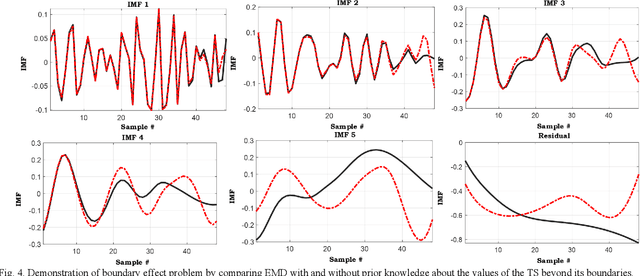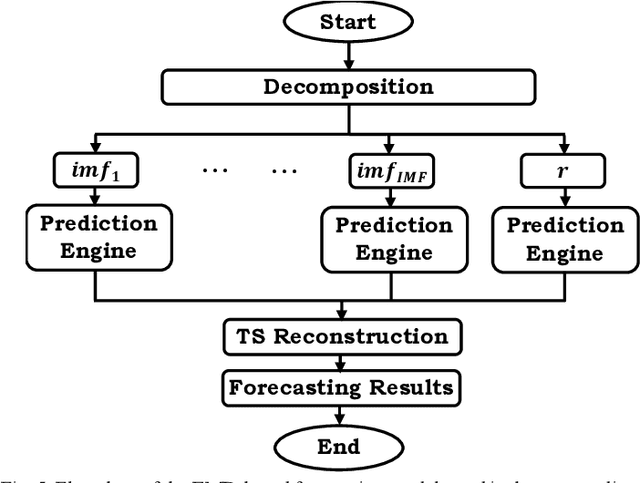Chi Yung Chung
Analysis of Empirical Mode Decomposition-based Load and Renewable Time Series Forecasting
Nov 23, 2020



Abstract:The empirical mode decomposition (EMD) method and its variants have been extensively employed in the load and renewable forecasting literature. Using this multiresolution decomposition, time series (TS) related to the historical load and renewable generation are decomposed into several intrinsic mode functions (IMFs), which are less non-stationary and non-linear. As such, the prediction of the components can theoretically be carried out with notably higher precision. The EMD method is prone to several issues, including modal aliasing and boundary effect problems, but the TS decomposition-based load and renewable generation forecasting literature primarily focuses on comparing the performance of different decomposition approaches from the forecast accuracy standpoint; as a result, these problems have rarely been scrutinized. Underestimating these issues can lead to poor performance of the forecast model in real-time applications. This paper examines these issues and their importance in the model development stage. Using real-world data, EMD-based models are presented, and the impact of the boundary effect is illustrated.
 Add to Chrome
Add to Chrome Add to Firefox
Add to Firefox Add to Edge
Add to Edge